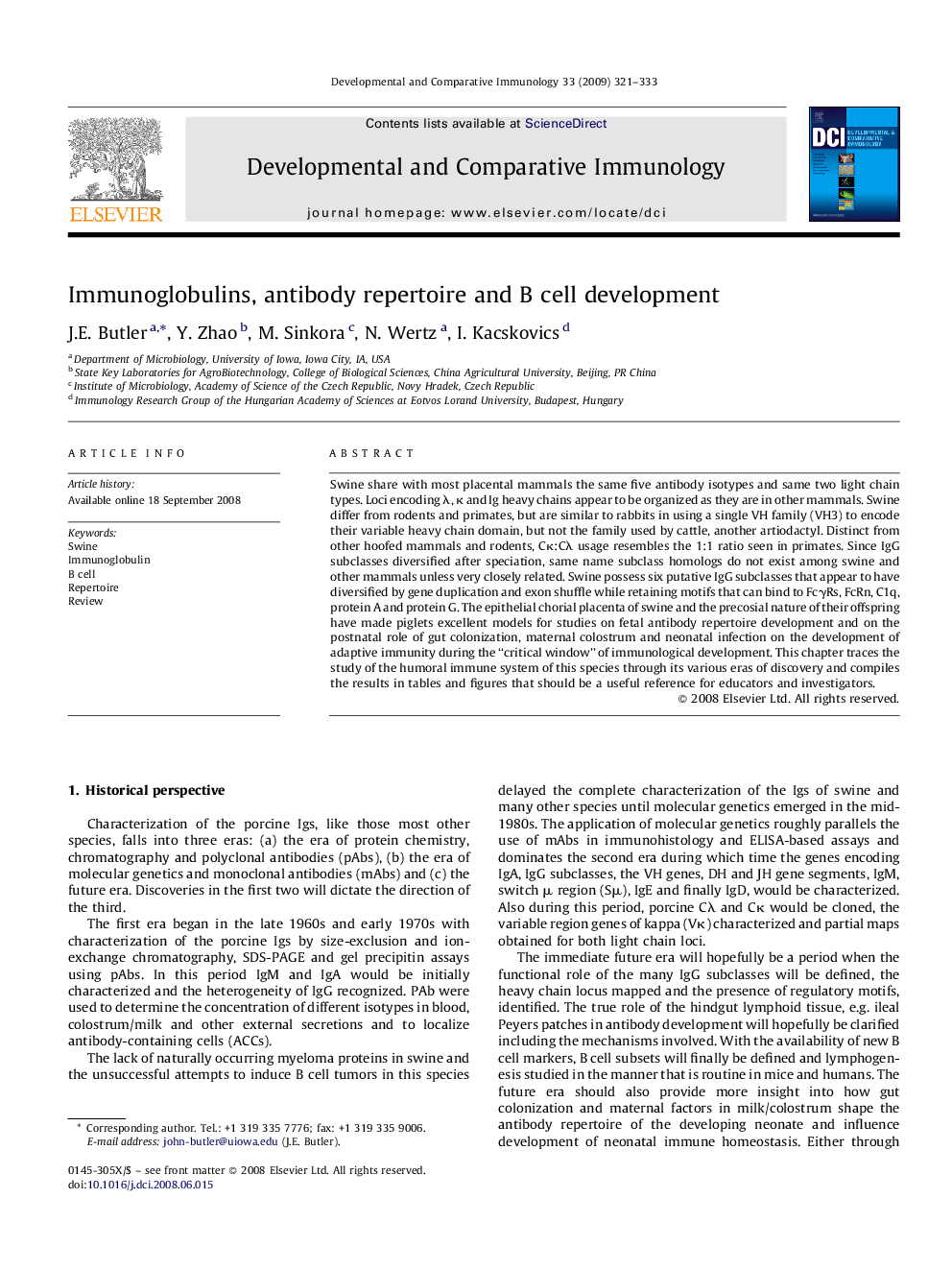| کد مقاله | کد نشریه | سال انتشار | مقاله انگلیسی | نسخه تمام متن |
|---|---|---|---|---|
| 2429835 | 1106524 | 2009 | 13 صفحه PDF | دانلود رایگان |

Swine share with most placental mammals the same five antibody isotypes and same two light chain types. Loci encoding λ, κ and Ig heavy chains appear to be organized as they are in other mammals. Swine differ from rodents and primates, but are similar to rabbits in using a single VH family (VH3) to encode their variable heavy chain domain, but not the family used by cattle, another artiodactyl. Distinct from other hoofed mammals and rodents, Cκ:Cλ usage resembles the 1:1 ratio seen in primates. Since IgG subclasses diversified after speciation, same name subclass homologs do not exist among swine and other mammals unless very closely related. Swine possess six putative IgG subclasses that appear to have diversified by gene duplication and exon shuffle while retaining motifs that can bind to FcγRs, FcRn, C1q, protein A and protein G. The epithelial chorial placenta of swine and the precosial nature of their offspring have made piglets excellent models for studies on fetal antibody repertoire development and on the postnatal role of gut colonization, maternal colostrum and neonatal infection on the development of adaptive immunity during the “critical window” of immunological development. This chapter traces the study of the humoral immune system of this species through its various eras of discovery and compiles the results in tables and figures that should be a useful reference for educators and investigators.
Journal: Developmental & Comparative Immunology - Volume 33, Issue 3, March 2009, Pages 321–333